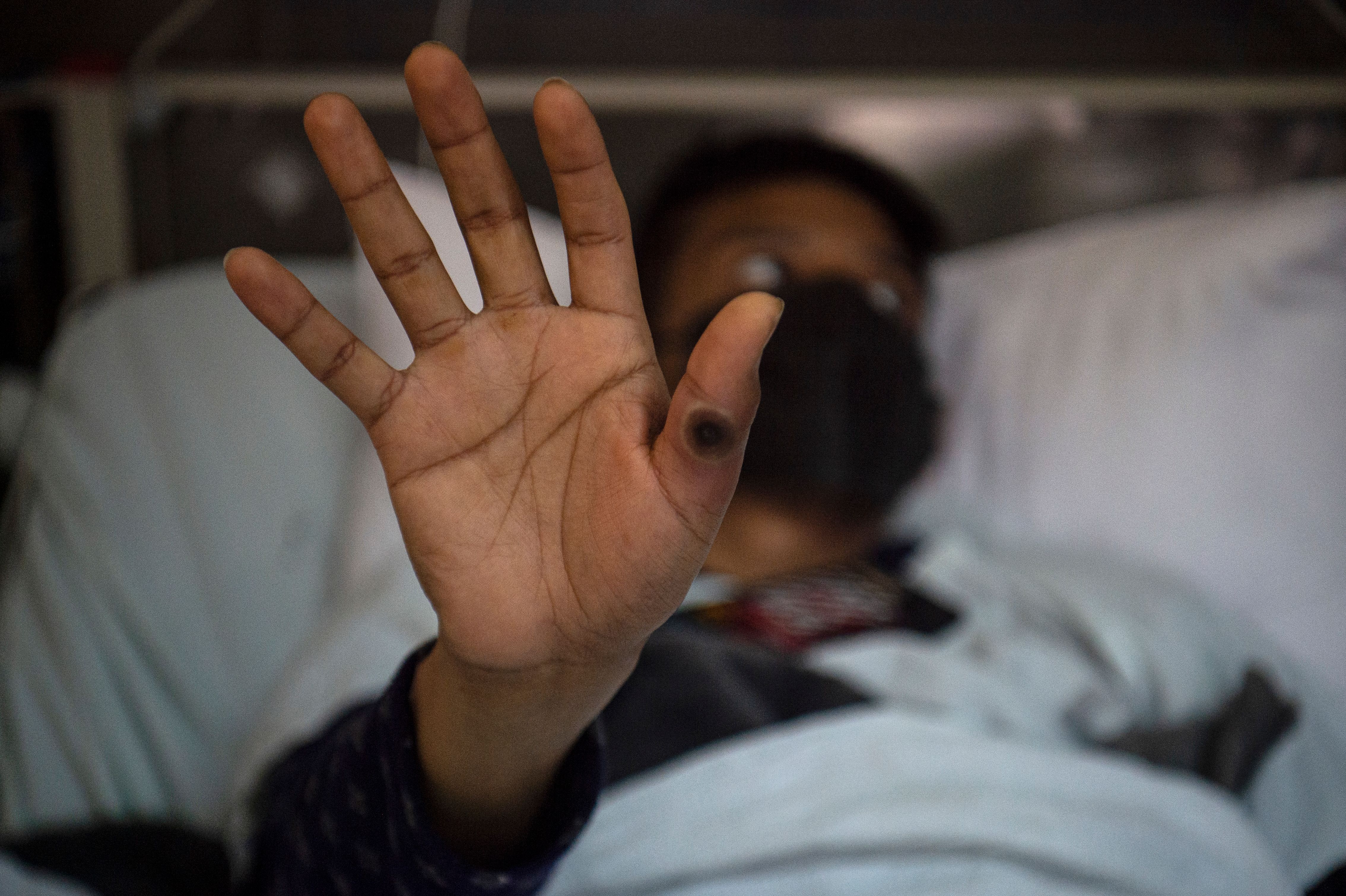The scientists detected the presence of the virus in most of the masks worn by the patients during the medical consultation.
A team of Spanish scientists has for the first time found high amounts of monkeypox virus in the air and in the saliva of infected patients, a finding that opens the door to the possibility that this virus is also transmitted by air.
Published in The Lancet Microbe journal , the study does not rule out that the virus (monkeypox virus or MPXV, for its acronym in English) is transmitted through the air, although direct contact, especially with skin lesions of an infected person, continues to be the dominant mode of infection.
The monkeypox virus, of the genus Orthopoxvirus, can be transmitted between animals and humans and, although its symptoms are similar to those of smallpox (eradicated in 1980), it is less severe, contagious and deadly.
The disease, endemic in central and western Africa, is mainly transmitted by close contact.
Global health emergency
In May 2022, a worldwide outbreak of monkeypox was declared a global health emergency by the World Health Organization (WHO) . Since then more than 79,000 cases have been confirmed, more than all recorded in Africa since the virus was discovered in 1970.
In Europe, and until November 8, there were 25,400 confirmed cases, according to the European Center for Disease Prevention and Control (ECDC), while, in Spain, more than 7,300 cases have been recorded.
“ The epidemiological data suggest that the transmission of the monkeypox virus takes place mainly by contact , but, in view of these new results, we propose not to underestimate and monitor the possibility that it can also be transmitted through the microdroplets of saliva and by air”, explains Antonio Alcamí, a CSIC researcher at the Severo Ochoa Molecular Biology Center (CBMSO-CSIC-UAM).
The investigation
In this study, the team analyzed saliva samples from 44 patients who, between May 18 and July 15, 2022, attended two health centers in Madrid (one of the regions with one of the highest incidences in the world). with characteristic skin lesions of the disease.
After analyzing the saliva samples, they detected the presence of viral DNA in 85% and “in 66% of the samples, the virus maintained its infectious capacity “, adds Bruno Hernáez, from the CBMSO-CSIC-UAM.
The scientists also detected the presence of the virus in most of the masks worn by patients during medical consultation.
And thanks to some nanofiber filters developed by the CSIC and the Bioinicia company, they detected viral DNA in the air at a distance of between two and three meters from the patient.
“ We have been able to determine by PCR the presence of the monkeypox virus in the air sampled during the medical visit of 64% of the study patients ”, but not its infective capacity, Alcamí points out.

